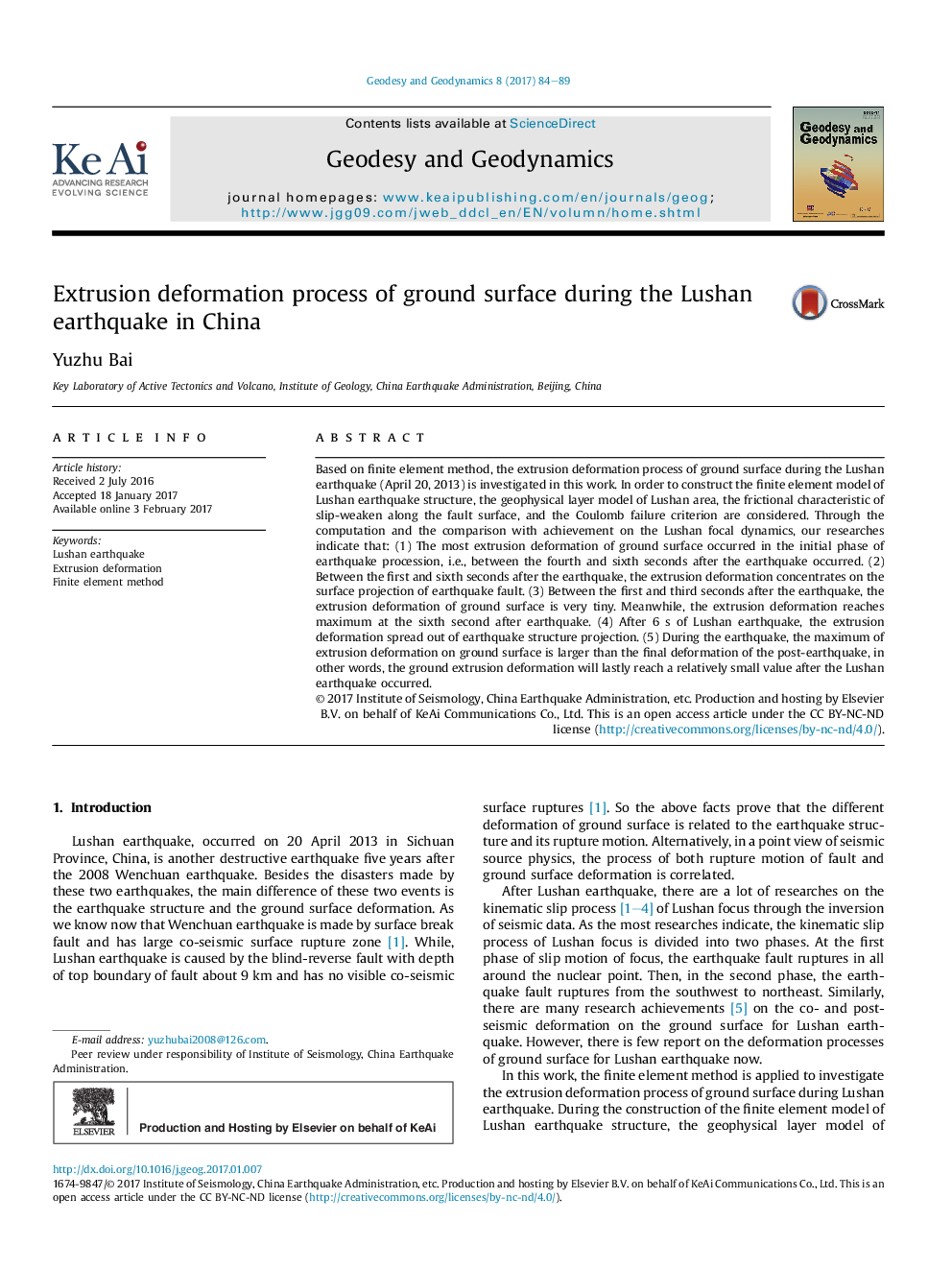| Article ID | Journal | Published Year | Pages | File Type |
|---|---|---|---|---|
| 5780679 | Geodesy and Geodynamics | 2017 | 6 Pages |
Based on finite element method, the extrusion deformation process of ground surface during the Lushan earthquake (April 20, 2013) is investigated in this work. In order to construct the finite element model of Lushan earthquake structure, the geophysical layer model of Lushan area, the frictional characteristic of slip-weaken along the fault surface, and the Coulomb failure criterion are considered. Through the computation and the comparison with achievement on the Lushan focal dynamics, our researches indicate that: (1) The most extrusion deformation of ground surface occurred in the initial phase of earthquake procession, i.e., between the fourth and sixth seconds after the earthquake occurred. (2) Between the first and sixth seconds after the earthquake, the extrusion deformation concentrates on the surface projection of earthquake fault. (3) Between the first and third seconds after the earthquake, the extrusion deformation of ground surface is very tiny. Meanwhile, the extrusion deformation reaches maximum at the sixth second after earthquake. (4) After 6Â s of Lushan earthquake, the extrusion deformation spread out of earthquake structure projection. (5) During the earthquake, the maximum of extrusion deformation on ground surface is larger than the final deformation of the post-earthquake, in other words, the ground extrusion deformation will lastly reach a relatively small value after the Lushan earthquake occurred.
